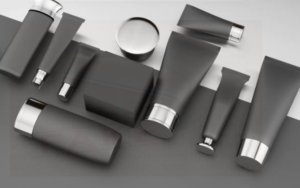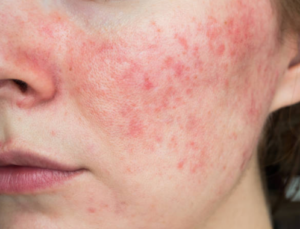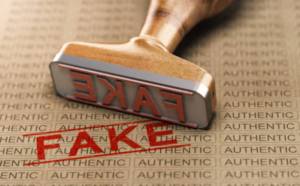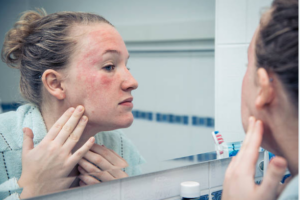The Plague of Counterfeit Cosmetics

The beauty industry is a global behemoth, with countless products promising to enhance our natural features and make us feel more confident. However, with the rise of online marketplaces and the allure of bargain prices, there’s a darker side to the beauty world that is affecting consumers worldwide – counterfeit cosmetics. In this in-depth exposé, we will shed light on the growing problem of counterfeit cosmetics, the health risks they pose, and how you can protect yourself from falling victim to this dangerous trend.
The Hidden Threat of Counterfeit Cosmetics
Counterfeit cosmetics, sometimes referred to as “fake” or “knockoff” cosmetics, present a serious and multifaceted threat to both consumers and the beauty industry. These counterfeit products are meticulously designed to mimic the appearance of legitimate beauty brands, right down to the packaging, logos, and branding. However, beneath the surface, a host of alarming dangers awaits those who unknowingly use these counterfeit items.
The Motivations Behind Counterfeit Cosmetics:
Counterfeit cosmetics thrive for several reasons, mainly driven by financial gain. The motivations behind these fake products include:
- Profit Margins: Counterfeit cosmetics are often produced at a fraction of the cost of genuine products, resulting in significant profit margins for counterfeiters.
- Consumer Demand: The allure of high-end beauty brands and their products drives demand for counterfeit cosmetics, especially among consumers seeking the appearance of luxury at a lower cost.
- Ease of Production: Advances in technology and globalization have made it easier for counterfeiters to manufacture and distribute fake cosmetics.
- Limited Oversight: The beauty industry is not as strictly regulated as pharmaceuticals or food products, creating a regulatory gap that counterfeiters exploit.
Dangers of Counterfeit Cosmetics:
The risks associated with counterfeit cosmetics extend far beyond the disappointment of purchasing a subpar product. Here are some of the most pressing dangers:
- Skin Irritation and Allergic Reactions: Counterfeit cosmetics often contain substandard or contaminated ingredients, such as dyes and fragrances, which can trigger skin irritations, rashes, and allergic reactions. The skin is the first line of defense against external threats, and exposing it to potentially harmful substances can lead to discomfort and long-term skin damage.
- Eye Infections: Counterfeit eye makeup products, such as mascara and eyeliners, are particularly concerning. These fake products can introduce harmful bacteria into the eyes, leading to eye infections, irritations, or even vision problems. Eye health should never be compromised for the sake of cosmetics.
- Toxic Ingredients: Some counterfeit cosmetics have been found to contain toxic elements such as lead, arsenic, and mercury. These substances can have severe health consequences when they come into contact with the skin or are absorbed through it. Prolonged exposure to toxic ingredients may lead to issues ranging from skin damage to organ toxicity.
- Exacerbating Pre-existing Skin Conditions: For individuals with pre-existing skin conditions like acne, eczema, or psoriasis, counterfeit cosmetics can exacerbate these conditions due to their inferior quality and harmful ingredients. What seems like a cost-saving measure may result in more significant skin issues and discomfort.
- Long-Term Effects: The regular use of counterfeit cosmetics may have lasting effects on both skin health and overall well-being. The potential consequences include premature aging, persistent skin damage, or even an increased risk of cancer due to exposure to hazardous substances.

The Most Counterfeited Cosmetics
Counterfeit cosmetics are often driven by the allure of well-known, high-end brands. Counterfeiters strategically target products that are popular and in-demand, which are more likely to attract unsuspecting consumers seeking quality at a discounted price. Here are some of the most commonly counterfeited cosmetics and the reasons behind their popularity in the counterfeit market:
1. Foundation:
Counterfeiters often replicate foundations because they are a staple in many makeup routines. Fake foundations may contain substandard ingredients that clog pores, leading to acne and other skin issues. Counterfeit foundation products are typically appealing to consumers because they offer the promise of an even skin tone and a flawless complexion at a fraction of the cost of authentic products.
2. Mascara:
Mascara is another product frequently counterfeited due to its essential role in enhancing eyelashes. Counterfeit mascara can introduce bacteria into the eyes, causing eye infections, irritations, or more severe vision problems. Since consumers are drawn to mascara to make their eyes pop and appear more vibrant, counterfeit versions present an enticing yet perilous alternative.
3. Lipstick:
Counterfeit lipsticks are widespread because they provide an easy and accessible way for counterfeiters to target the lucrative beauty market. Fake lipsticks are particularly concerning because they often contain toxic substances. The allure of vibrant lip color and the promise of full, luscious lips make counterfeit lip products a common counterfeit commodity. These products pose risks to consumers, particularly if they accidentally ingest harmful ingredients.
4. Eyeliner:
Counterfeit eyeliners are a significant concern due to their direct application to the delicate eye area. Fake eyeliners may contain substandard ingredients that can cause eye infections, irritations, and other eye-related issues. The demand for eyeliners, particularly for achieving dramatic or precise eye makeup looks, makes them a prime target for counterfeiters.
5. Skincare Products:
Skincare products, including serums, moisturizers, and cleansers, are also vulnerable to counterfeiting. Counterfeit skincare items may not offer the promised benefits and can even harm the skin. These products are popular targets because consumers are increasingly focused on skincare for achieving healthy, radiant complexions.

The Telltale Signs of Counterfeit Cosmetics
Recognizing counterfeit cosmetics is crucial for safeguarding your health and well-being. Counterfeiters have become increasingly sophisticated in replicating the appearance of genuine beauty products. To protect yourself, it’s vital to be aware of the following telltale signs and warning indicators:
1. Unusually Low Prices:
If a cosmetic product is being sold at a price significantly lower than the standard retail price, it should raise suspicions. Counterfeit cosmetics are often marketed at a fraction of the cost of genuine products to attract budget-conscious consumers.
2. Packaging Discrepancies:
Carefully scrutinize the packaging of the cosmetic product. Counterfeit cosmetics are known for inconsistencies, such as misspelled words, inconsistent logos, and poor-quality printing. Authentic brands invest considerable effort into their packaging to ensure high quality and attention to detail.
3. No Ingredient List:
Legitimate cosmetics should always provide a list of ingredients. If this crucial information is missing from the product’s packaging or label, it’s a red flag. The absence of an ingredient list not only indicates a potential counterfeit but also hinders your ability to make an informed choice about the product’s safety.
4. No Batch Code or Expiry Date:
Genuine beauty products are subject to stringent quality control measures, including the assignment of batch codes and expiry dates. Counterfeit cosmetics frequently lack this important information, which is essential for quality assurance. Be wary of any product without a visible batch code or expiry date.
5. Unusual Smell or Texture:
Counterfeit cosmetics may exhibit peculiar characteristics, such as an unusual smell, texture, or consistency. If the product seems off in any way, it may be counterfeit. Trust your senses and instincts when evaluating the authenticity of a cosmetic item.
6. Untrusted Sellers:
Purchasing cosmetics from unfamiliar or unverified sellers, especially on online marketplaces with limited oversight, can be risky. Stick to trusted retailers and authorized sellers to reduce the chances of acquiring counterfeit products.
7. Third-Party Reviews:
Before making a purchase, research and look for reviews and feedback from other consumers who have purchased the same product. Online reviews and testimonials can provide valuable insights into the reputation and authenticity of the seller.

Protecting Yourself from Counterfeit Cosmetics
To protect yourself from the health risks posed by counterfeit cosmetics, follow these guidelines:
Recognizing the dangers posed by counterfeit cosmetics is only the first step in safeguarding your health and well-being. Protecting yourself from these deceptive products requires a combination of vigilance, knowledge, and informed decision-making. Here are practical steps you can take to minimize the risks of encountering counterfeit cosmetics:
1. Buy from Trusted Retailers:
Purchase cosmetics from well-established and reputable retailers, both online and offline, that are authorized to sell the brands you trust. Trusted retailers are more likely to carry authentic products, reducing the risk of encountering counterfeit cosmetics.
2. Check Packaging:
Thoroughly examine the packaging for inconsistencies, misspelled words, poor-quality printing, and other signs that may indicate a counterfeit product. Authentic brands invest in high-quality packaging to maintain their image and reputation.
3. Read Reviews:
Look for online reviews and feedback from other consumers who have purchased the same product. The experiences of fellow buyers can offer valuable insights into the reputation and authenticity of the seller.
4. Inspect Ingredients:
Always check for an ingredient list on the product. Genuine cosmetics provide this list as a standard practice. The presence of an ingredient list allows you to make informed decisions about the product’s safety and suitability for your skin.
5. Purchase from Authorized Sellers:
Many brands maintain lists of authorized sellers on their official websites. If you’re unsure about a retailer’s legitimacy, consult the brand’s website to confirm whether they are an authorized distributor.
6. Beware of Unusual Discounts:
Be cautious of products being sold at unusually low prices, especially when they claim to be authentic. Remember that counterfeit cosmetics are often marketed at significantly reduced prices to attract budget-conscious consumers.
7. Avoid Unverified Online Marketplaces:
Exercise caution when buying cosmetics from unverified online marketplaces or social media platforms. These platforms may have limited oversight and may not ensure the authenticity of products.
8. Purchase in Physical Stores:
Whenever possible, consider purchasing cosmetics in physical retail stores. Brick-and-mortar stores usually have established relationships with genuine suppliers and are less likely to carry counterfeit products.
9. Report Suspected Counterfeits:
If you come across cosmetics that you suspect are counterfeit, report them to the brand, the platform where you found them, and the relevant authorities. Reporting counterfeit products is essential for both consumer safety and industry regulation.
10. Educate Yourself:
Stay informed about the latest trends in counterfeit cosmetics, warning signs, and common tactics used by counterfeiters. Knowledge is your best defense against falling victim to these deceptive products.
Counterfeit cosmetics pose a significant health risk to consumers, luring them with the promise of low prices and the appearance of genuine products. However, the hidden dangers of these fake cosmetics can lead to skin irritations, allergic reactions, and even serious health problems. It’s crucial to remain vigilant when purchasing cosmetics and prioritize your safety by choosing trusted retailers and being informed about the warning signs of counterfeit products. Your health and well-being should always be the top priority, even in the pursuit of beauty.

